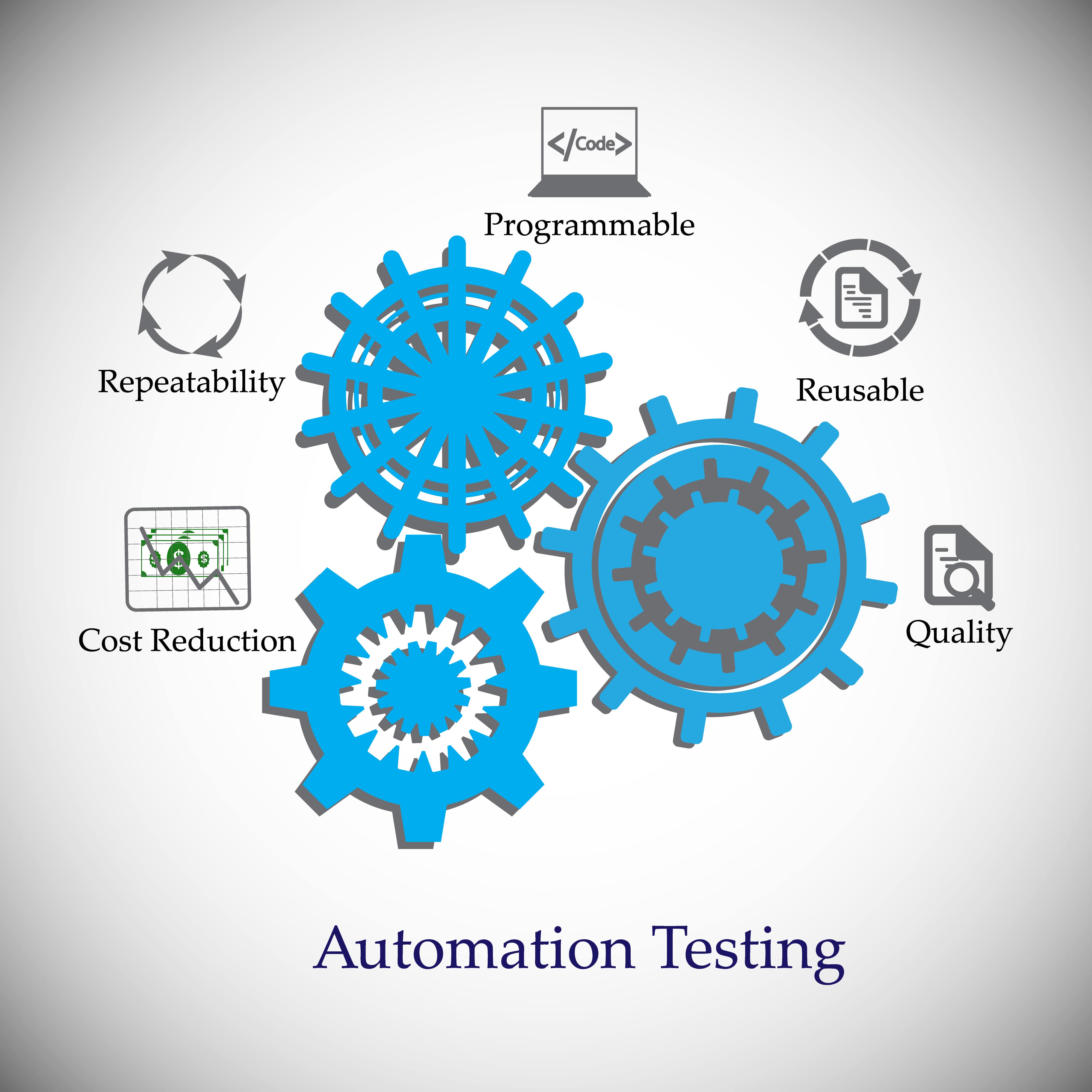Exactly How Automation Testing Reinvents Quality Assurance Processes
Exactly How Automation Testing Reinvents Quality Assurance Processes
Blog Article
Making Certain Success in Automation Evaluating: Trick Metrics, Obstacles, and Solutions Every QA Team Ought To Know
In the world of software application quality control, the landscape of automation testing is ever-evolving, requiring a careful strategy to guarantee seamless procedures. Trick metrics work as the compass guiding QA groups via the huge terrain of test automation, losing light on progression and areas for improvement. Difficulties loom large, usually casting darkness on the course to success. By comprehending these obstacles and applying efficient solutions, QA teams can navigate via complexities with skill. The trip to mastering automation testing is paved with nuances that require an eager eye for tracking, evaluation, and continuous improvement. automation testing. As the market pushes forward, the pursuit for ideal performance in automation testing remains a consistent quest, advising QA groups to outfit themselves with the expertise and strategies vital for accomplishment.
Relevance of Key Metrics
Understanding the importance of vital metrics is essential for examining the performance and efficiency of automation testing processes. Trick metrics offer as quantifiable actions that offer beneficial understandings into various aspects of the screening procedure, such as examination coverage, test execution time, defect density, and examination instance performance. By examining these metrics, QA teams can identify traffic jams, inadequacies, and areas for improvement within their automation screening structure.
One essential aspect of key metrics is their capability to track development and keep an eye on the general wellness of the screening process (automation testing). They enable stakeholders to make educated decisions based upon data-driven insights, which can cause a lot more reliable testing approaches and much better resource allocation. In addition, key metrics can help groups set sensible goals, measure the success of automation efforts, and demonstrate the ROI of automation screening efforts

Common Obstacles Encountered
Obstacles generally encountered in automation screening processes can considerably influence the overall performance and effectiveness of QA teams. One of the significant challenges is the choice of the best examination situations for automation. Not all examination cases appropriate for automation, and picking the incorrect ones can cause lost time and resources. In addition, preserving examination manuscripts can be a challenging task, particularly as the application undertakes constant modifications. Examination script upkeep needs continuous updates and alterations to guarantee they reflect the current performance properly. Another typical obstacle is the initial financial investment required for establishing up automation frameworks and devices. This can be a barrier for some organizations, particularly smaller sized ones with restricted spending plans. Automation screening might not cover all elements of screening, such as use and user experience testing, which still need hands-on intervention. Getting over these obstacles needs appropriate preparation, strategic test situation option, robust upkeep processes, appropriate sources, and a clear understanding of the restrictions of automation testing.
Efficient Solutions for Difficulties
To address the challenges run into in automation testing, executing reliable remedies is vital for improving the effectiveness and productivity of QA groups. One essential service is to invest in durable training programs for QA groups to ensure they have the required abilities to successfully useful reference utilize automation tools. Training can connect understanding voids, improve understanding of automation structures, and improve next scripting capacities, inevitably resulting in much more efficient examination development and execution.
One more vital solution is to develop clear interaction networks within the QA group and with other stakeholders, such as programmers and task managers. Reliable interaction assists in lining up expectations, sharing progress updates, and without delay resolving concerns or roadblocks that may occur during the automation screening process.

Monitoring and Analysis Methods
Carrying out reliable monitoring and evaluation techniques is essential for making certain the success and performance of automation testing processes. Furthermore, assessing examination outcomes and metrics supplies beneficial insights right into the high quality of the software program being checked and the performance of the screening method.
One secret technique in tracking and analysis is the usage of dashboards that consolidate pertinent metrics and KPIs in a visually easily accessible style. These control panels provide an extensive review of test implementation status, test insurance coverage, defect more helpful hints trends, and various other critical info. Routinely evaluating and examining these control panels can assist QA teams make educated decisions, focus on tasks, and optimize testing efforts.
Furthermore, applying automated alerts and notices based on predefined limits can improve proactive monitoring and timely intervention. By setting up signals for efficiency variances or test failings, groups can resolve problems quickly and prevent them from rising. In general, monitoring and evaluation strategies play an essential function in guaranteeing the effectiveness and success of automation screening efforts.
Constant Renovation Approaches
Enhancing the effectiveness of automation testing processes requires the constant improvement of techniques and techniques. Constant improvement techniques are essential for QA teams to adjust to advancing innovations and supply high-quality software. One essential method to improving automation testing processes is to perform routine evaluations and retrospectives. By analyzing past screening cycles, teams can identify bottlenecks, ineffectiveness, and locations for improvement. Implementing feedback loopholes and including lessons found out into future screening structures can produce substantial enhancements in time.

Conclusion
In final thought, it is vital for QA groups to understand the crucial metrics, challenges, and remedies in automation screening to make sure success. By very carefully monitoring and assessing data, applying reliable solutions to typical obstacles, and continuously improving methods, QA teams can enhance their screening procedures and supply high-grade software products. Following these practices will inevitably lead to a lot more effective and reliable automation testing techniques.
By assessing these metrics, QA teams can recognize bottlenecks, ineffectiveness, and areas for enhancement within their automation screening framework.
Additionally, crucial metrics can aid groups established practical goals, determine the success of automation efforts, and demonstrate the ROI of automation testing efforts.
Challenges typically come across in automation testing procedures can substantially influence the general performance and efficiency of QA groups. Automation testing might not cover all aspects of screening, such as usability and customer experience testing, which still require hands-on intervention.In conclusion, it is critical for QA groups to understand the vital metrics, obstacles, and solutions in automation screening to make sure success.
Report this page